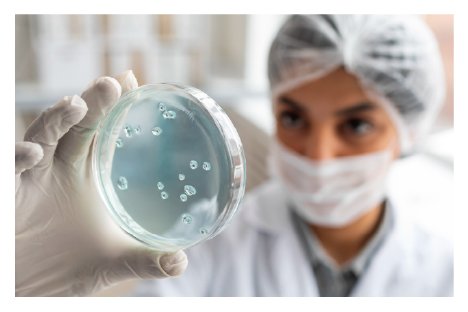
At Yellow Fertility & IVF, our flagship IVF program with 86% success rate combines cutting-edge science with deeply compassionate care to give you the best possible chance of building your family.
What is Blastocyst Culture Procedure?
In a traditional IVF cycle, embryos were transferred 2 or 3 days after fertilisation. But with blastocyst culture, embryos are developed for up to 6 or 7 days to reach the blastocyst stage. The blastocyst stage refers to a more developed and stable phase that reflects natural implantation timing more closely.

Why Families Choose IVF at Yellow Fertility?
- 86% Success Rate – Among the highest in the industry
- Advanced Labs – World-class technology for precise, high-quality care
- Personalized Protocols – Tailored to your body and journey
- Expert Team – Fertility specialists, embryologists, and counselors
- Emotional Support – Compassionate care at every step

When Should You Consider Laser-Assisted Hatching?
Not every IVF cycle requires this method. However, Laser-Assisted Hatching (LAH) Treatment in IVF can be a helpful option if:
- You have had two or more failed IVF cycles.
- You are undergoing frozen embryo transfer (FET).
- You are over 38 years old.
- You have elevated FSH levels or poor ovarian reserve.
- You are facing unexplained infertility.
- Your embryo’s outer shell appears thicker or harder under observation.
Our fertility experts will review your medical history and embryo development before recommending this technique.

When Should You Consider Opting for Blastocyst Culture Procedure?
- Previous IVF cycles failed due to early implantation
- You are planning for embryo freezing
- You aim to improve your pregnancy success rates
- Embryos are showing minimal development by Day 3
Blastocyst Culture Vs. Traditional Day 3 Embryo Transfer - Which is Better?
In IVF, embryos can be transferred on Day 3, Day 5 or Day 6 (blastocyst stage). Day-3 transfers occur earlier, often when fewer embryos are available or development is slow. Blastocyst transfer allows embryos more time to grow, helping select those most likely to implant, which can increase success rates.
However, not all embryos reach the blastocyst stage, so it may not be suitable for everyone. Blastocyst culture is ideal for patients with multiple high-quality embryos, repeated IVF failures, or those planning genetic testing. Your fertility specialist will recommend the best option based on your unique case.
Is Blastocyst Culture Right for You?
If you have ever asked yourself either of the following questions:

How can I improve my chances of getting pregnant using IVF?

What can I do to reduce the risk of failed implantation?

Is there a way to choose the best embryo without guessing?

Can I increase the success of a single embryo transfer?

How can I ensure better embryo selection for genetic testing or freezing?
How Blastocyst Embryo Transfer Benefits Fertility Treatment?
Blastocyst culture is an essential step in the IVF procedure. Here’s why it matters:
Better Embryo Selection
Not all embryos develop into blastocysts. Culturing them to day 7 allows us to identify and transfer the most viable ones.
Maximum Implantation Rates
Blastocysts are better prepared for uterine implantation, increasing your chances of pregnancy.
Reduced Risk of Multiple Pregnancies
Since we can confidently choose the best embryo, we only need to transfer one. This minimises the risks associated with twins or triplets.
Improved Synchronisation
The timing of a blastocyst transfer aligns more naturally with your body’s implantation window, making the process a perfect balance of nature and science.
Why Choose Yellow IVF for Blastocyst Culture Procedure?
At Yellow IVF, our approach to blastocyst culture combines state-of-the-art labs, high-quality culture equipment, and expert embryologists who monitor each embryo with care. Our lab is equipped with next-generation incubators that maintain the perfect environment for extended embryo growth.
We use time-lapse imaging and strict assessment criteria to track development without disrupting the embryo. By transferring only the most viable blastocyst, we improve the chances of implantation and a healthy pregnancy. Our team will recommend a fresh or frozen transfer based on your unique profile for the best possible outcome.
Our team is not just highly skilled, they are also supportive and always ready to listen. We use the latest technology to give you the best possible care. Every treatment at our facilities is designed specifically for your body and your situation. With some of the highest success rates in the field, Yellow IVF gives you real hope, every step of the way.
The Yellow IVF Advantages

Impressive Success Rates
Outstanding IVF success rate of 86% using blastocyst-stage embryo transfers

Tailored Treatment
Personalised fertility care with proven success

Advanced Care
Fail-safe treatment with lab experts and embryo grading techniques

Reliable Results
Yellow IVF is where science meets compassion
Making Miracles: One Embryo at a Time
If you are exploring IVF or seeking ways to enhance your current treatment, the blastocyst culture procedure could be a game-changer. We are here to help you understand exactly how it works and if it is right for you. Because when it comes to starting a family, you deserve every advantage and a team that truly cares.
Need additional information on blastocyst culture?
Write to us at info@yellowivf.com or drop by our clinics. We are open every day from 9:00 AM to 6:00 PM. Take the first confident step toward your family’s future today!
FAQ about Blastocyst Culture Procedure
Blastocyst culture is recommended for patients with multiple high-quality embryos. For patients with few embryos, experts follow the traditional day 3 transfer process.
In some cases, embryos fail to reach the blastocyst stage due to either issues with egg or sperm quality or the culture conditions.
Genetic testing helps in identifying healthy embryos for implantation. Thus, fertility experts often recommend genetic testing with blastocyst culture.
Yes, some embryos may stop growing once they reach the blastocyst stage. While this reduces the number of available embryos, it also helps in selecting embryos that have the best growth potential.
Yes. Since blastocysts are more developed embryos, they are transferred and implanted about 5 to 7 days after fertilisation.
